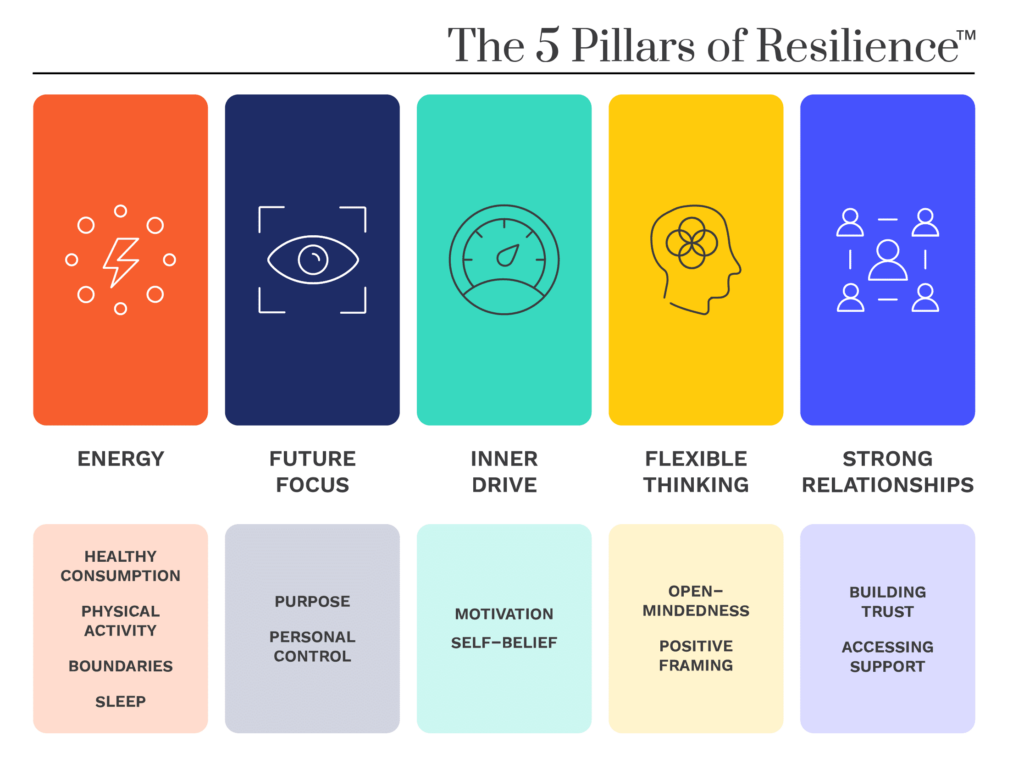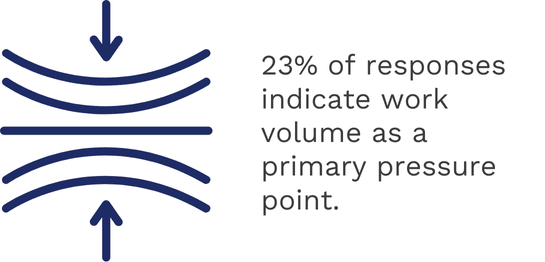26 September 2024
Building Resilient Leadership
Are your leaders feeling the pressure? In fast-paced work environments, high stress levels and leadership burnout are all too common. But there’s a way to turn the tide. In her latest article, Business Psychologist, Sandra Ordel, explores the business imperative for leadership resilience and key strategies HR and L&D need to know.
Building Resilient Leadership: A Guide for Organisations Today
This year, we conducted extensive research into the resilience of leaders and managers. Our findings highlighted the role leadership resilience plays in navigating high-pressure work environments.
This article presents the business imperative for resilient leadership. Drawing on neuropsychology, we explore:
- Why resilient leaders are essential for business success
- Key areas where leadership resilience is most compromised
- The main pressure points leaders face and why they matter
We also share proven strategies to help HR and L&D teams foster resilient leadership.
1. Why Resilient Leadership Matters
Leadership resilience is not just a desirable trait. It is a necessity in today’s complex business landscape. Here are our top 8 reasons why resilient leadership matters:
- Crisis Management: Resilient leaders remain calm and clear-headed in crises. They can manage their stress responses, avoid reactive decision-making and provide stability to their teams.
- Sustained Innovation: Resilience fosters adaptability and creative problem-solving. These skills enable leaders to learn from setbacks and stay innovative.
- Improved Team Wellbeing: Leaders who model resilience create positive emotional climates. They reduce stress in teams and boost engagement, collaboration and loyalty.
- Effective Change Management: Resilient leaders guide teams through change. They know how to maintain focus and reduce anxiety during transitions.
- Enhanced Cognitive Performance: Resilience protects cognitive resources like memory, focus, and decision-making under pressure. This leads to clearer thinking and better judgement.
- Organisational Agility: Resilient leaders help organisations adapt quickly to changes in the market, promoting flexible thinking and strategic agility.
- Trust and Loyalty: Leaders who demonstrate resilience inspire trust. They create a loyal and engaged workforce that thrives under consistent, supportive leadership.
- Corporate Social Responsibility (CSR): Resilient leaders make sustainable, empathetic decisions. They drive CSR initiatives that benefit both their organisation and society.
2. Key Areas of Resilience Most Compromised for Leaders
Using the Wraw psychometric, we analysed the resilience of over 2,100 leaders and managers globally. We measured mindset and behaviours across The 5 Pillars of Resilience. This study identified the areas of leadership resilience that are most at risk.

Physical Resilience
Leaders struggle to sustain their energy levels. They bear heavy workloads, long hours, and the expectation to perform at a high level. Neuropsychological research shows that prolonged stress depletes the brain’s energy reserves. The prefrontal cortex – responsible for decision-making, impulse control and executive function – is particularly at risk.
Impact: Compromised physical resilience has significant consequences. It diminishes productivity and increases the likelihood of burnout. When leaders are close to burnout, they are less able to think creatively and adapt. This limits their capacity to respond to challenges effectively.
Psychological Resilience
Personal control is a vital component of psychological resilience. Yet middle management often lacks autonomy at work. This lack of control activates the brain’s threat response. In turn, this increases levels of the stress hormone, cortisol. Without intervention, chronic stress sets in. This impairs the hippocampus, a brain region crucial for memory and learning.
Impact: A decline in psychological resilience results in diminished motivation and engagement. This affects not only a leader’s mental health but also team morale. Disengaged leaders will struggle to inspire and support their teams effectively.
Social Resilience
Leaders in high-pressure roles may feel isolated, which undermines social resilience. Neuropsychological studies show that positive social interactions release oxytocin. This vital hormone buffers against stress by fostering trust. Leaders without strong social connections experience heightened stress responses and greater emotional exhaustion.
Impact: Low social resilience decreases collaboration and belonging in the workplace. Isolated leaders may struggle to maintain an effective team. This leads to a breakdown in communication and increased stress levels.

3. Key Pressure Points for Leaders
A number of pressure points compound the challenges leaders face and drain their resilience.
- High Work Volume: Nearly 23% of leaders report feeling overwhelmed by workload. This cognitive load reduces the ability to focus and make clear decisions. Over time, this can lead to mental fatigue, increasing the likelihood of mistakes.
- Organisational Change Fatigue: Constant organisational change triggers a heightened state of uncertainty and anxiety. Neuropsychological research shows that the amygdala becomes hyperactive during periods of uncertainty. This brain region processes emotions like fear and anxiety in unfamiliar situations. As a result, leaders and managers will find it difficult to adapt.
- Work-Life Imbalance and Excessive Hours: Chronic overwork is a major contributor to sleep deprivation. Sleep is vital for consolidating memories and clearing out neurotoxins in the brain. Sleep-deprived leaders may struggle to retain important information. They may also become emotionally reactive and less empathetic. So, prioritising sleep is not only a matter of personal health, but also vital for ensuring a thriving, resilient team.
4. What HR and L&D Teams Can Do
Research shows that resilience isn’t a fixed trait. With the right interventions, it can be developed. HR and L&D teams have a crucial role to play.
- Assess leadership resilience: The Wraw psychometric gives leaders an understanding of their current resilience. It provides clarity on development areas and how their resilience impacts leadership performance.
- Implement resilience programmes: Targeted resilience training equips leaders with the tools they need to develop resilience. These programmes provide practical strategies to maintain performance under pressure.
- Establish an environment that enables physical wellbeing: Encourage healthy habits within the organisation. Promote regular breaks, physical activity, and a balanced work-life schedule. Helping leaders manage their physical energy will sustain long-term productivity.
- Support psychological wellbeing: Leaders who seek support are better positioned to stay resilient during challenging times. Develop psychological safety by ensuring open communication and offering mental health resources.
- Create a culture of belonging: Ensure initiatives are inclusive and address the diverse needs of leaders.
Conclusion: The Neuropsychological Imperative for Leadership Resilience
In a volatile business landscape, resilient leadership is essential. Neuropsychology highlights how resilience buffers stress and supports performance. HR and L&D teams have a pivotal role to play. Through targeted interventions, they can build the resilience of leaders, ensuring they can handle pressure, navigate change and support their teams. This is the foundation for sustained, healthy business performance.
Our training programs on workplace mental health can help leaders develop coping mechanisms, manage workloads effectively, and create psychologically safe environments. Click here to learn more.

Author Bio: Sandra Ordel is a Business Psychologist specialising in leadership resilience and neuropsychology. She supports organisations worldwide to build resilient leadership teams that foster healthy performance.
We transform managers into highly resilient people leaders.

We transform managers into highly resilient people leaders.









